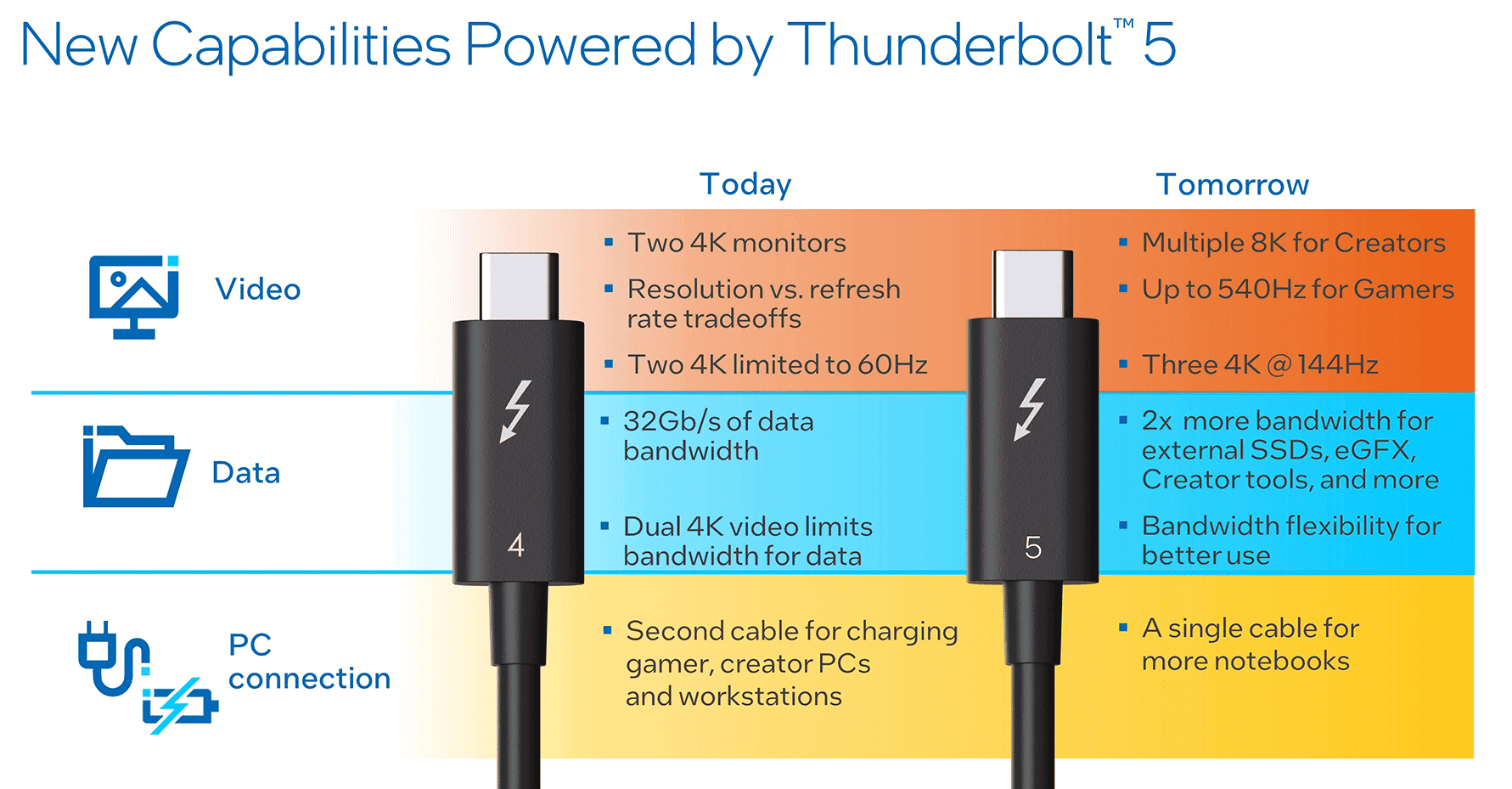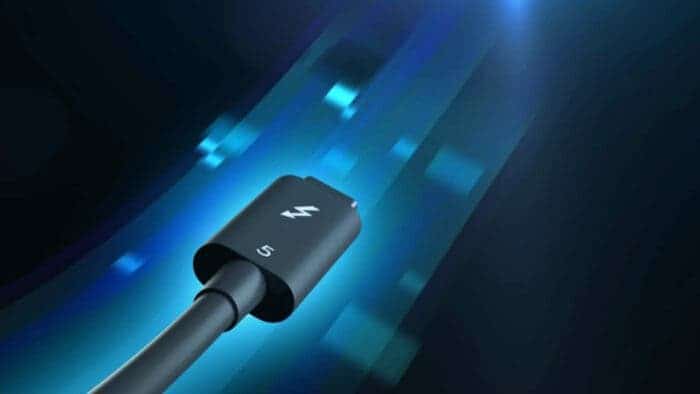Apple introduced new C-port tech this year, making friends ponder the iPhone 15 upgrade. Truth be told, the C-port switch disappoints. Pro series was expected to get a fast 40Gbps Thunderbolt 3, but Apple chose 10Gbps USB 3 instead. We believe that the adoption of Thunderbolt in mobile phones is inevitable, but not the protocol updates. Shockingly, a day before iPhone 15’s launch, Intel, Apple’s old partner, dropped Thunderbolt 5. It packs big upgrades.

Unleashing Lightning Speeds: Introducing Thunderbolt 5
Thunderbolt 5 has doubled the core bandwidth from Thunderbolt 4, increasing it from 40Gbps to 80Gbps. The new setup has four channels, moving data in both directions. This means it can handle 80Gbps at once, and it can jump to a peak speed of 120Gbps. To put it simply, that’s like sending 15GB of data in just one second or a whopping 900GB in a single minute. Thunderbolt 5 delivers unmatched speed and efficiency.
The connection between the new Thunderbolt tech and the USB-IF Association’s USB 4 specification is also exciting. Thunderbolt 3 is the foundation for USB 4, and Thunderbolt 5 is compatible with the USB 4 80Gbps standard, which is essentially the USB 4 2.0 protocol. In its turn, Thunderbolt 5 is compatible with a wide range of protocols, including Thunderbolt 4, Thunderbolt 3, and DP2.1. That’s why it is easy to integrate this tech with popular interfaces. It also supports up to 240W power supplies, which can be customized to meet the needs of hardware manufacturers.

One of the main advantages of the Thunderbolt 5 is that it gets its own main chip. This might help AMD. In the past, Intel put Thunderbolt in CPUs, hurting AMD. With Thunderbolt 5’s separate chip, AMD can compete fairly. It may change the market for fast data and connections.
The new Thunderbolt standard also promises improved performance for external graphics card docks, making it an attractive option for hardware enthusiasts. We expect the Intel-supported standard to provide superior compatibility compared to third-party alternatives.





